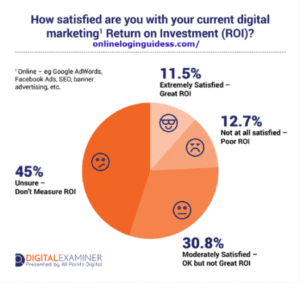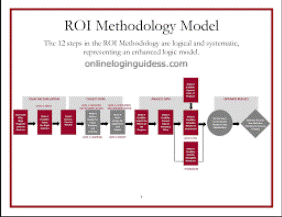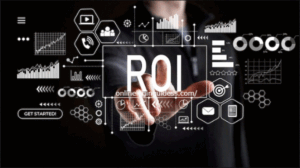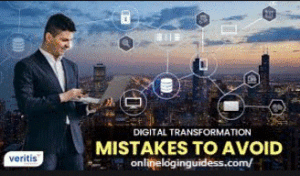Digital Marketing ROI – Unlocking the Real Value of Every Dollar Spent
Introduction In today’s hyper-competitive digital arena, knowing exactly how much value you gain from each rupee, dollar, or pound

Introduction
In today’s hyper-competitive digital arena, knowing exactly how much value you gain from each rupee, dollar, or pound spent on marketing is non-negotiable. This critical measure — Digital Marketing ROI (Return on Investment) — empowers businesses to:
-
Justify marketing budgets with quantifiable outcomes
-
Optimize resource allocation across strategies and channels
-
Adapt quickly to market changes and emerging trends
This article explores:
-
The definition and core principles of ROI
-
Key metrics and formulas
-
Best practices, frameworks, and tools
-
Advanced methods and trends
-
Real-world case studies
-
Tips for sustainable, measurable growth
Let’s begin!
1. What Is Digital Marketing ROI and Why It Matters

1.1 Definition & Formula
At its most fundamental level:
Net Profit from Marketing includes revenue directly attributable to marketing campaigns minus their associated costs. If you spend $100,000 and earn $300,000 in attributable revenue, net profit is $200,000 — yielding an ROI of 200%.
This measure communicates simply: for every rupee spent, what does the business earn back?
1.2 ROMI vs. ROI
Digital ROI is often referred to as ROMI (Return on Marketing Investment) — essentially the same concept but used interchangeably to emphasize marketing-specific attribution analyticodigital.com+1attanomedia.com+1vervocity.io+1wsj.com+1en.wikipedia.org.
2. Key Metrics to Measure ROI

You need more than just final revenue numbers. A variety of metrics give structure and transparency:
2.1 Cost per Acquisition (CPA) / Cost per Conversion
Measures how much you spend to acquire a single customer or lead:
Lower CPA = more efficient budgets ikonik.digitalsaleshive.com+4almondsolutions.com+4attanomedia.com+4.
2.2 Customer Acquisition Cost (CAC) & Lifetime Value (CLV)
CAC calculates acquisition cost across marketing, sales, and support. CLV measures the total revenue from a customer during the entire relationship analyticodigital.com+1ikonik.digital+1.
-
CAC = Total acquisition spend / # new customers
-
CLV = Avg revenue per sale × # of purchases × retention period en.wikipedia.org+9ikonik.digital+9almondsolutions.com+9
Comparing CLV with CAC reveals whether your marketing is sustainable long-term.
2.3 Return on Ad Spend (ROAS)
Focused on ad-focused ROI, this shows how much revenue you gain per advertising rupee:
A ROAS of 4:1 means ₹1 in ads yields ₹4 in revenue en.wikipedia.org+14ikonik.digital+14webfx.com+14.
2.4 Click‑Through Rate (CTR) & Conversion Rate
CTR indicates how well you attract clicks with your messaging:CTR = Clicks / Impressions theaustralian.com.auen.wikipedia.org.
Conversion rate shows how many of those clicks actually convert:Conversion Rate = Conversions / Visitors attanomedia.com+15analyticodigital.com+15webfx.com+15.
2.5 Cost Per Click (CPC), Cost per Lead (CPL), View-Through Rate (VTR)
-
CPC: how much each click costs you — vital for PPC efficiency saleshive.com.
-
CPL: cost to gain a qualified lead — especially important in B2B/premium industries vervocity.io+2webfx.com+2techfunnel.com+2.
-
VTR: passive views, tracking those who see but don’t click immediately en.wikipedia.org.
3. Tools & Frameworks for ROI Measurement

3.1 Attribution Models
Single-channel attribution is outdated. Modern marketers use multi-touch attribution to credit every touchpoint — email, ads, social, retargeting etc. attanomedia.com+1reputationmart.com+1.
3.2 Marketing Mix Modeling (MMM)
This statistical method evaluates offline and online channel effectiveness using regression models en.wikipedia.org+1attanomedia.com+1. It helps apportion sales gain to each marketing element.
3.3 Analytics Tools
-
Google Analytics: track site behavior, goal completions
-
Google Ads / FB Insights: campaign performance
-
Email & CRM systems: conversions, CLV, retention tekenterprise.com+15reputationmart.com+15en.wikipedia.org+15voguebusiness.com+3saleshive.com+3arxiv.org+3.
Conversion and tracking setup are crucial — without them, you’re flying blind .
4. Best Practices to Maximize ROI

Implementing these strategies can significantly improve digital marketing yield:
4.1 Omnichannel Integration
Don’t rely on one platform. Integrating email, social, ads, and offline touchpoints ensures higher, consistent ROI .
4.2 AI-Powered Personalization
Use AI for real-time content personalization, optimizations, and distribution strategies .
4.3 A/B & Multivariate Testing
Don’t guess — test copy, creatives, CTAs, landing pages to identify top performers .
4.4 User-Generated Content (UGC)
Leverage customer reviews and authentic social content — these can drive trust and 145% more conversions bazaarvoice.com.
4.5 Influencer & Short-Form Video
Micro and nano influencers + short videos (TikTok, Reels, Shorts) deliver high-engagement at lower cost reddit.com.
4.6 Voice & Visual Search
Optimize for voice and image search — adding schema markup and conversational copy ensures better visibility .
4.7 Privacy‑First Strategies
Collect and lean on first-party data amid GDPR/CCPA changes. Privacy by design builds long-term trust saleshive.com+1tekenterprise.com+1.
5. Advanced Trends & Tech

5.1 AI-Driven Content & Distribution
Leading brands are using AI to generate and optimize content — improving output 300–500%, with up to ~67% spike in ROI allenwoffard.com+1huffingtonpost.es+1.
5.2 Predictive Analytics & Behavioral Targeting
Predictive tools forecast user behavior and personalize touchpoints — e.g., Amazon-like recommendation engines en.wikipedia.org.
5.3 Real-Time Optimization
Dynamic A/B testing allows campaigns to auto-optimize copy, visuals, and CTAs in real-time techfunnel.com+2allenwoffard.com+2vervocity.io+2.
5.4 AR/VR, Immersive & Sustainable Strategies
Immersive experiences and ethical marketing (sustainability, data protection) are resonating more in 2025 reputationmart.com+14huffingtonpost.es+14saleshive.com+14.
6. Real‑World Case Studies
6.1 Clothing Brand on Instagram
As covered earlier: ₹50,000 campaign → ₹200,000 in sales → 300% ROI — a textbook example of strong targeting and platform optimization.
6.2 Fresh Cosmetics
Leveraged UGC — 217 reviews, 145% lift, ₹1.48 million incremental revenue — underscoring UGC’s power ikonik.digital+4saleshive.com+4almondsolutions.com+4bazaarvoice.com.
6.3 Financial Tech Innovator
Employing AI-content systems — 215% rise in organic traffic, 43% savings in production costs allenwoffard.com.
7. Step‑by‑Step ROI Optimization Guide
-
Set Clear Goals — awareness, leads, revenue.
-
Map Attribution — choose multi-touch or MMM.
-
Define KPIs — CPA, CLV, CTR, ROAS, VTR.
-
Install Tracking — pixels, goals, CRM integrations.
-
Run A/B Tests — for creative, targeting, landing page.
-
Analyze & Iterate — use analytics and AI insights to adjust daily.
-
Scale Smartly — double down on what works; prune what doesn’t.
-
Forecast & Project — echoing MMM/simulation modeling
8. Common Pitfalls to Avoid

-
Skipping attribution — don’t rely solely on last-click.
-
Ignoring CLV — short-term returns can be misleading.
-
Overlooking data privacy — builds trust and compliance.
-
Under-testing — what worked yesterday may perform poorly tomorrow.
9. Looking Ahead: Trends to Watch
-
Hyper-personalization powered by
-
Voice & image-first content strategies
-
Privacy-safe predictive targeting
-
Immersive micro-influencer video campaigns
-
MMM blended with real-time adaptive analytics
Conclusion
Digital Marketing ROI isn’t a static number — it’s a continuous, evolving strategic focus. By combining rigor (tracking, attribution, metrics) with innovation (AI, UX, omnichannel), marketers can build campaigns that are not just visible — but visible, valuable, and profitable.
A 300% ROI is possible — if you blend clarity, creativity, and data-driven execution.












